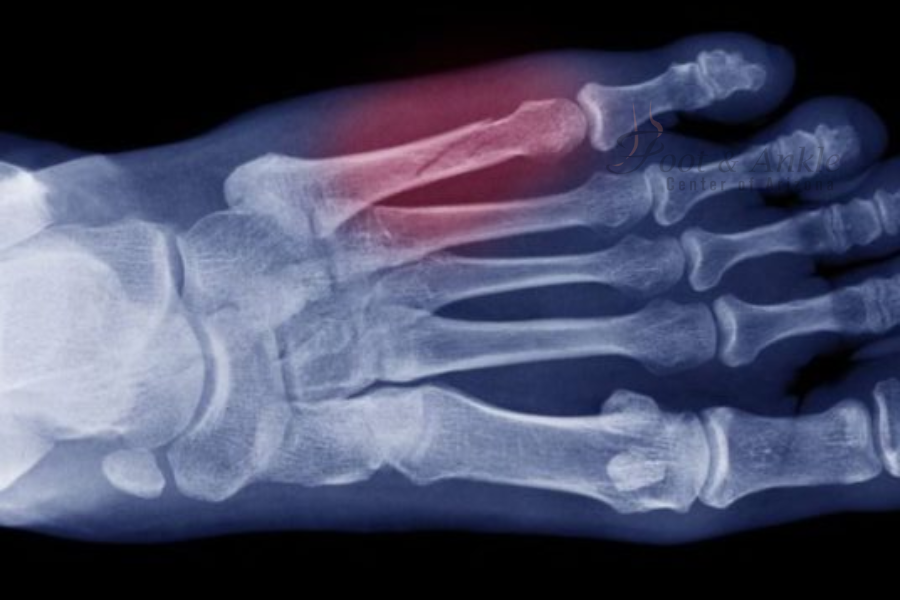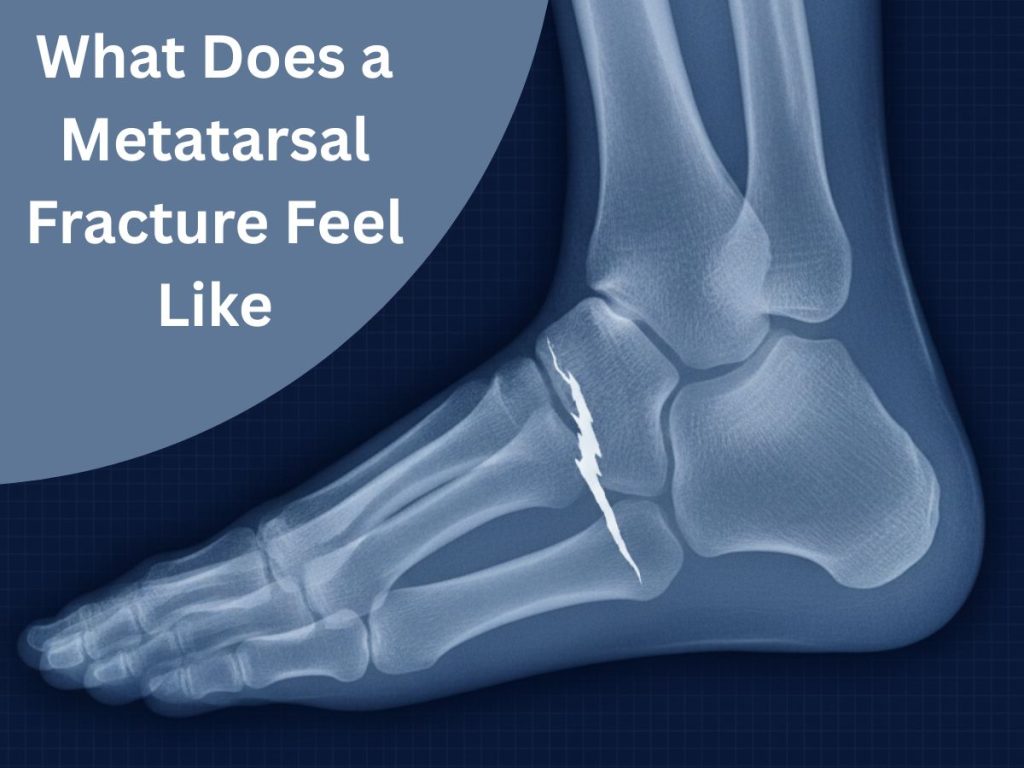What Does a Metatarsal Fracture Feel Like: A metatarsal fracture, mostly a second metatarsal one, can be a painful and disabling injury, affecting walking and other daily activities. It becomes quite necessary that a person experiencing such feelings of fracture should know the symptoms, treatment options, and the recovery process.
What is a Metatarsal Fracture?
The metatarsals are long bones that link the ankle to the toes. The breaking of any one of these bones is called a metatarsal fracture. There are various causes of such types of fractures, including trauma, overuse, and stress. One of the most common bones fractured of the foot is the second metatarsal.
Symptoms of Metatarsal Fracture
Pain and Tenderness: Pain is the most immediate and obvious symptom. The pain is usually experienced at or near the site of the fracture and becomes more severe upon the application of pressure, such as when walking or standing.
Swelling and Bruising: A moderate amount of swelling will occur in the area around the injury followed by bruising. Swelling presents additional problems to the condition as it makes it difficult to wear shoes and can increase pain.
Trouble Walking: The severity of the fracture can cause one difficulty bearing weight on that foot. One could even find it impossible to walk in more severe cases.
Noticeable Deformity: You may feel your foot does not appear quite right—you could think it appears crooked. That can be an indication of a more serious displaced fracture.
Diagnosis of Metatarsal Fracture
In the event of suspicion of metatarsal fracture, seek help from a doctor immediately. A health professional will, most of the time, perform an examination and request imaging studies such as X-rays to confirm the presence of the fracture.
Treatment Options for 2nd Metatarsal Fracture
Rest and Immobilization:
Rest is one of the primary treatments for metatarsal fracture. Try to avoid bearing weight on the affected limb. One can use crutches if needed. Immobilization by either a splint for a metatarsal fracture or a cast may be needed to hold the bone in place and aid in healing.
Metatarsal Fracture Splint:
A metatarsal splint is usually applied to stabilize the fracture. The splint gives support to the bones by limiting the amount of movement and, hence, allows it to heal in its anatomical position.
Metatarsal Surgery with Pins:
In severe or displaced fractures, one may need to go to the extent of surgery. Fractures of the metatarsal require surgical treatment with pins, screws, or plates to strap the bones in their proper positioning. This is an open reduction and internal fixation, or ORIF, surgical procedure.
CPT for ORIF Metatarsal Fracture:
The current Procedural Terminology code for ORIF metatarsal fracture is what a medical professional would use when recording and billing for said surgical procedure. These techniques guarantee the right kind of treatment, which is only borne out of an appropriate recording
Closed Treatment Metatarsal Fracture CPT:
If the fractures are minor and do not require surgical treatment, then there can be a closed treatment. It would re-align the bones without making an incision. The CPT code in such non-surgical treatment describes the procedure aptly.
Recovery Process
Recovery from a metatarsal fracture depends on the severity of the fracture and the mode of treatment. The important points to remember are as follows:
Medical Advice:
You must follow your healthcare professional’s advice about the prescribed course of treatment, which may include a cast or a splint, crutches, or keeping yourself from putting weight on your foot.
Physical Therapy:
Depending on the severity, after the initial healing of the foot, physical therapy may be required to regain strength, flexibility, and range of motion in the foot. This can facilitate a faster and more complete recovery.
Gradual Return to Activity:
Once your healthcare provider gives you the go-ahead, use gradual return to activity. Try to avoid high-impact activities until completely healed to help avoid re-injury to your particular condition.
Pain Management:
It may be required to use over-the-counter pain medications or prescribed pain relievers to manage pain during the recovery process. Always take prescribed Medication as per the instructions of your treating physician.
Prevention of Metatarsal Fractures
Even though it is not possible to prevent all metatarsal fractures, you can do the following things to reduce the chances of metatarsal fracture:
Good quality Footwear:
Wear shoes that provide adequate support and cushioning to your feet. While playing sports, never wear a lousy pair of shoes with a flat sole and almost no arch support.
Gradual Increase in Activity:
If you are just starting to exercise in a new program, then make sure to gradually build up your intensity and duration of workouts to allow for adjustment time for your body. This will help avoid stressing the bones in your feet from drastic activity increases.
Keep Your Bones Healthy:
Be sure to take in enough calcium and vitamin D so that your bones are nice and strong. In addition, weight-bearing exercises will help ensure as many strong bones as possible, therefore avoiding fractures.
Keep Listening to Your Body:
Any pain or discomfort on your feet may prove to be a savior by giving an early State ahead. In case of continuous pain, one should seek medical advice and get the problem rectified immediately before it worsens.
Conclusion
A metatarsal fracture is a painful and troublesome injury, especially to the second metatarsal. Comprehension of the symptoms, kind of treatment, and period of recovery is crucial for every case related to such a type of fracture. Adequate treatment ranging from rest with immobilization to splinting and even surgical procedures like ORIF, along with faithful adherence to medical advice, is integral to complete recovery. The preventive steps taken and the timely seeking of medical advice to a large extent will help in preventing the occurrence of metatarsal fractures and ensure the health and functioning of your feet.
Whether you need further information related to foot and ankle healthcare or an appointment, call the Foot and Ankle Center of Arizona at +1 480.342.9999. Our highly qualified team of physicians, podiatrists, surgeons, and therapists is dedicated to your comprehensive foot and ankle care.





